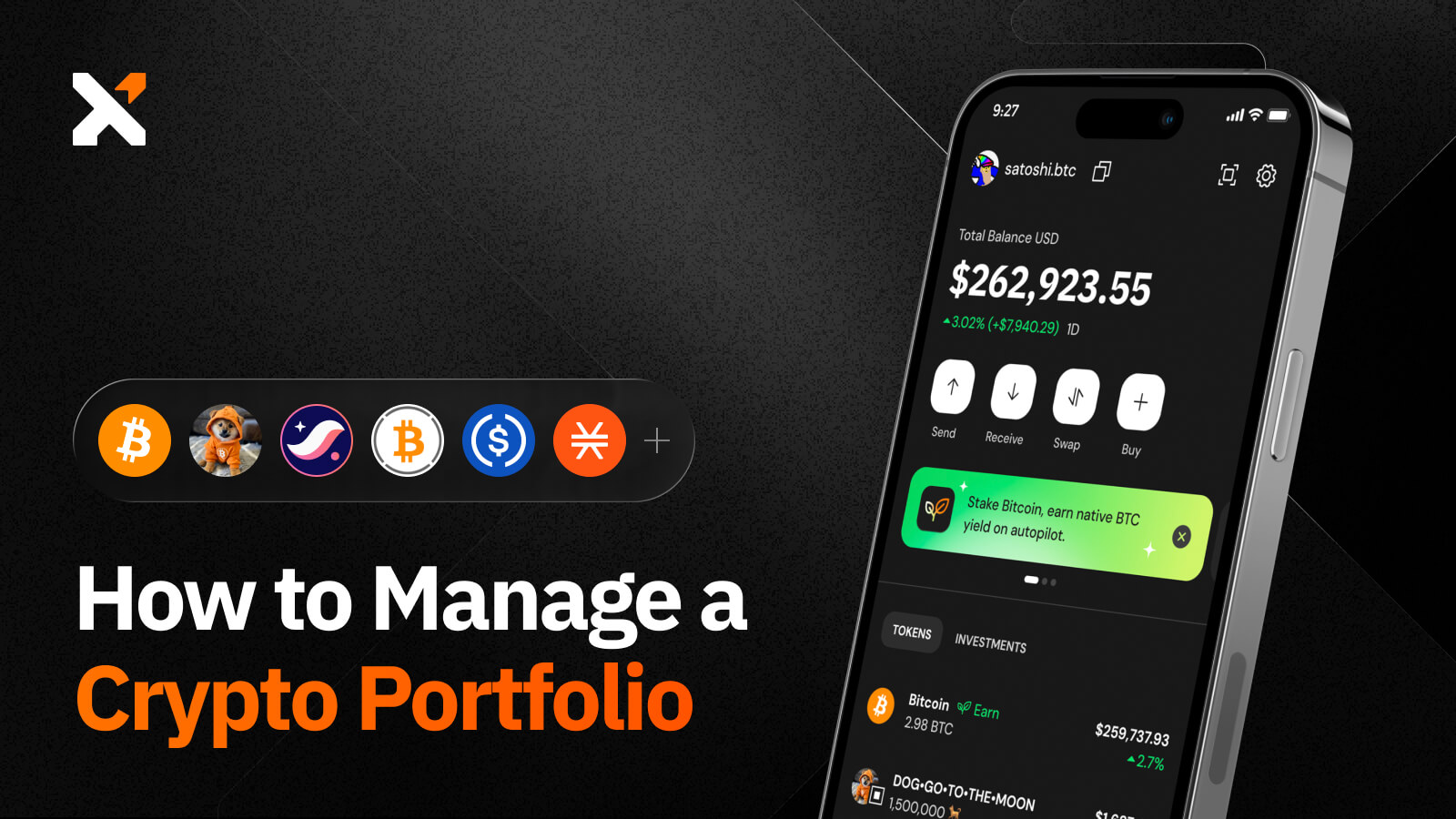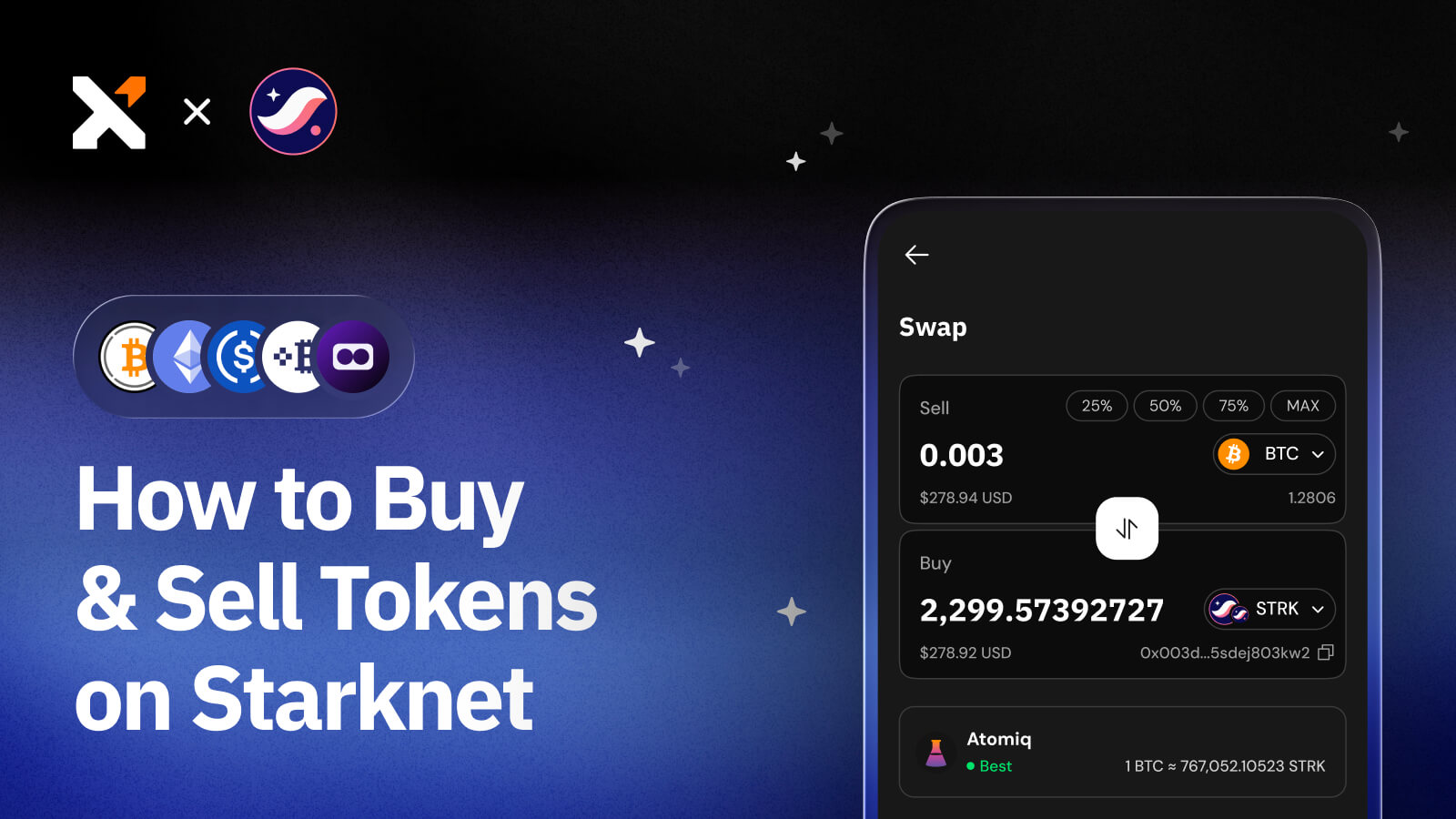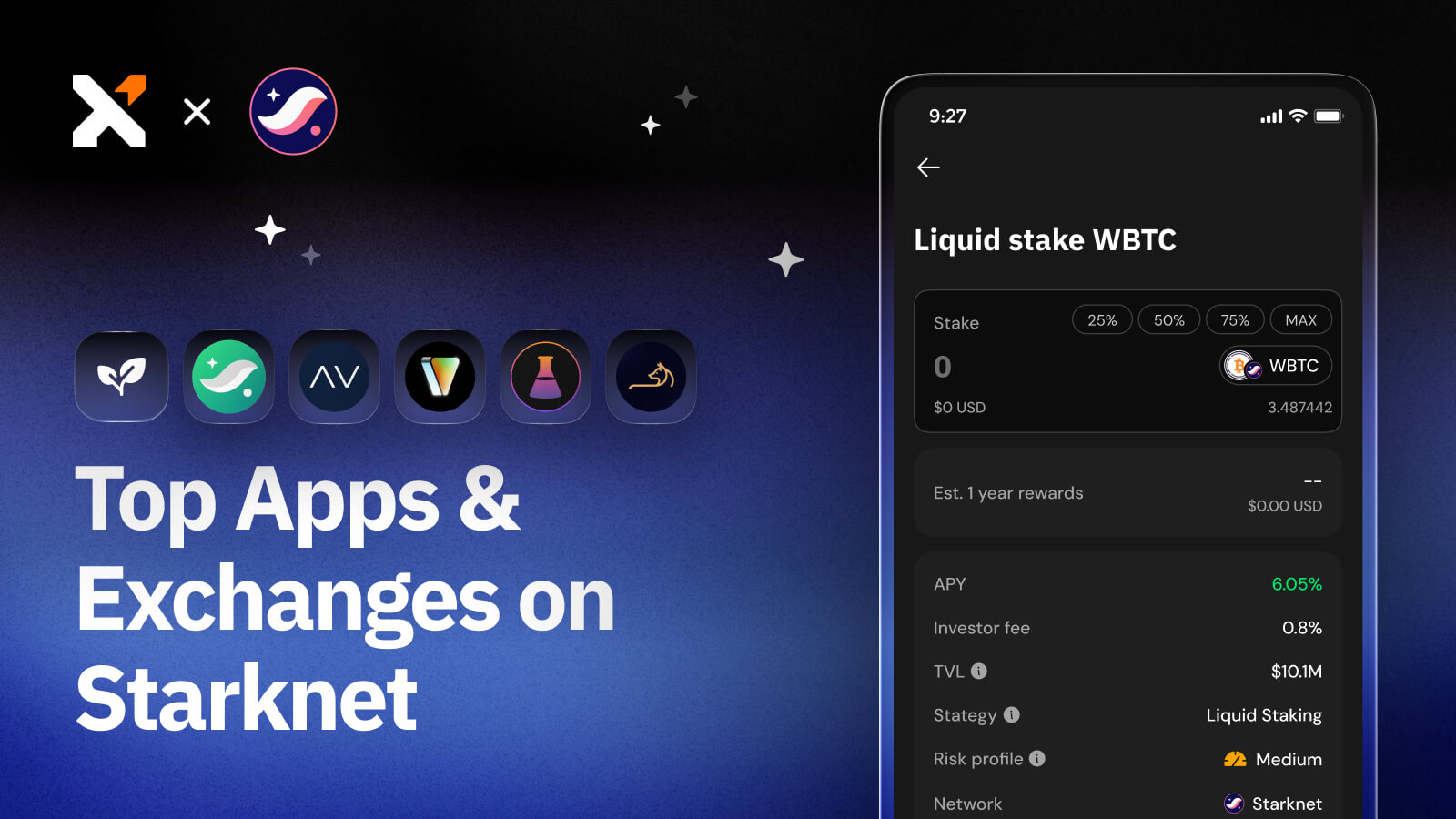What Is a Bitcoin Bridge? An Introduction to Cross-Chain Bridges
Learn what Bitcoin bridges are, how they work, what risks they introduce, and how you can bridge your BTC to Bitcoin Layer 2 and other blockchain ecosystems.

Sign up for updates!
Stay tuned to our latest news and updates
.svg)
Bitcoin bridges enable bitcoin holders to utilize cryptocurrency in other blockchain networks, bringing blockchain interoperability and increased utility into the Bitcoin ecosystem.
Read on to learn more about Bitcoin bridges, how they work, why we need them, and which ones you can currently use to bridge BTC onto other chains.
What Are Bitcoin Bridges?
Bitcoin bridges allow bitcoin holders to transfer cryptocurrency to other blockchain networks (and vice versa) to enhance blockchain interoperability and provide more use cases for the world’s leading cryptocurrency.
For example, cross-chain bridges enable you to deploy BTC in tokenized form on the Ethereum network to earn yield in Ethereum’s DeFi market.
Why Do We Need Bitcoin Bridges?
The Bitcoin network and most other blockchains have a closed architecture that makes them secure and reliable. However, this isolation and independence mean that the networks don't have built-in cross-chain communication capabilities, preventing users from moving tokens freely across networks.
To address this challenge, blockchain bridges have emerged, enabling seamless cross-chain token transfers to enhance blockchain interoperability.
Bitcoin bridges have now become critical infrastructure to facilitate BTC transfers between the Bitcoin network and other blockchains, enabling BTC holders to deploy tokenized Bitcoin in other blockchain ecosystems to access decentralized applications (dApps) and earn yield in the DeFi markets.
How Do Blockchain Bridges Work?
Cross-chain bridging, facilitated by blockchain bridges, involves locking BTC on the Bitcoin network, and the bridge issuing the equivalent number of tokenized BTC tokens on the other blockchain.
The minted tokens are usually pegged at 1:1 with BTC, holding de facto the same value as the original digital currency. This pegging is similar to how Bitcoin-based stablecoins try to link their value to fiat currency or gold.
Let's say you have BTC that you want to utilize on the Ethereum network without exchanging your digital currency for ETH.
You can use a Bitcoin bridge to wrap your BTC and mint Wrapped Bitcoin (wBTC) of equivalent value compatible with the Ethereum network.
The bridging process is reversible; the bridge can burn the minted wBTC tokens and return the native BTC to your Bitcoin wallet.
There are two main ways to bridge bitcoin: one uses wrapped tokens and the other liquidity pools. Each operates differently, so let’s at those next.
Wrapped Tokens
Bridging Bitcoin through this method involves sending your BTC to a custodian and requesting equivalent tokens compatible with the secondary network.
The custodian then locks (wraps) the BTC in a digital vault using a smart contract and mints new “bitcoin” tokens on the new network. Wrapped tokens allow BTC to be used on other networks, which improves interoperability.
To “unwrap” your BTC tokens, you can use a Bitcoin bridge to have your minted tokens burnt and removed from circulation, unlocking your original BTC on the Bitcoin network, which are then released back to your wallet.
Liquidity Pools
In addition to wrapping tokens, cross-chain bridges can also use liquidity pools as a bridging mechanism. In these types of blockchain bridges, crypto assets are deposited in liquidity pools, enabling liquidity providers to earn rewards while allowing users to bridge assets from one chain to another (and back).
Types of Blockchain Bridges

There are various types of blockchain bridges classified by their functionality, mechanism, and level of centralization. They include unidirectional and bidirectional bridges, sidechain bridges, and custodial and non-custodial bridges.
Let's look at how each works.
Unidirectional and Bidirectional Bridges
Unidirectional bridges allow users to bridge assets one way and can’t bridge assets back to the native blockchain. In contrast, bidirectional bridges allow users to bridge assets in both directions freely.
Custodial and Non-custodial Bridges
Custodial bridges, or trusted bridges, are centralized blockchain bridges where users surrender control of their assets to a central authority. The authority is responsible for securing the funds and transferring assets from one network to another.
Non-custodial bridges, or trustless bridges, on the other hand, are decentralized blockchain bridges that use smart contracts and decentralized protocols to transfer assets. Users remain in control of their assets without restrictions from a central authority.
Sidechain and Multichain Bridges
Sidechain bridges can connect two independent blockchains or a parent blockchain to the child network. For instance, you can use a sidechain to bridge Bitcoin layers. Sidechains use a two-way peg to bridge tokens from one network to another.
Multichain bridges allow users to transfer multiple assets to many networks.
The Benefits and Drawbacks of Cross-Chain Bridges
Now, let’s that a look at some of the advantages and disadvantages of cross-chain bridges.
Pros
- They provide a way for users to transfer assets between different blockchains, enhancing blockchain interoperability and cross-chain liquidity.
- They allow users to leverage benefits from different ecosystems, opening up new trading opportunities and improving market access. For instance, cross bridges could clear up transaction back-up and reduce the number of users stuck in the Bitcoin mempool.
- Cross-chain bridges can also help spread tokens across different platforms, reducing asset concentration and eliminating ecosystem vulnerability points.
Cons
- They are notoriously complex due to varying network architectures.
- They can attract nefarious actors looking to exploit potential smart contract vulnerabilities to steal funds.
- Centralized bridges are potentially vulnerable to operational errors, fraud, or theft from the central authority managing the funds.
Therefore, you should conduct your own research on a cross-chain bridge you plan to use to bridge assets to ensure you are aware of the risks involved.
Examples of Cross-Chain Bridges for Bitcoin
Here are a few examples of bridges that connect Bitcoin to other networks.
wBTC
Wrapped Bitcoin (wBTC) is usually an ERC-20 token that connects Bitcoin to the Ethereum network. This bridge allows you to tokenize your BTC, converting it into wBTC in order to access Ethereum’s DeFi ecosystem.
The wBTC token is minted through a custodial process, where its primary custodian, BitGo, holds your BTC and sends you an equivalent amount of wBTC.
sBTC
sBTC is a 1:1 bitcoin-backed asset on Stacks network that allows you to use your BTC in DeFi applications on this network. You need to swap your BTC through a smart contract to acquire sBTC.
sBTC is said to be secured by 100% of the hash power of Bitcoin. Also, sBTC operations happen directly on the Bitcoin blockchain and reach 100% Bitcoin finality.
tBTC
tBTC is Threshold Network’s decentralized bridge, currently in its second version (tBTC v2), that offers BTC holders a permissionless solution to bridging Bitcoin to Ethereum. It is secured by a decentralized node network and pegged at 1:1 with BTC.
The bridge uses a randomly selected group of operators running nodes on the Threshold Network to secure deposited BTC through threshold cryptography. It operates via a network of permissioned signers. However, the team behind the bridge aims to make it permissionless.
Bitcoiners can get tBTC by depositing their BTC into a smart contract to take advantage of Ethereum’s decentralized applications and DeFi ecosystem.
Garden
Garden is a bidirectional, non-custodial bridge that allows users to transfer their native BTC to 10+ blockchains and back to the Bitcoin chain. It is the fastest Bitcoin bridge, enabling cross-chain Bitcoin swaps in as little as 30 seconds. Unlike traditional bridges, which require users to give up custody of their Bitcoin or wait for lengthy confirmation times, Garden eliminates both issues through its trustless design.
The settlement happens peer-to-peer with Market Makers completely trustlessly. A user deposits asset A into a vault on the source chain, while the Market Maker deposits asset B into a vault on the destination chain. If the user claims on the destination chain, the Market Maker receives the asset on the source chain. If the user does not claim, each party gets their funds back.
Avalanche Bridge
The Avalanche Bridge is a two-way cross-chain bridge facilitating asset transfers between the Avalanche network and Bitcoin. It uses SGX enclave to process transfers and only supports Pay-To-Witness-Public-Key-Hash.
Bitcoin users can utilize the bridge to deploy the digital currency in Avalanche’s DeFi ecosystem to benefit from high transaction speeds and low costs.
RBTC
Rootstock Bitcoin (RBTC) is a 1:1 Bitcoin-backed asset and the native token of the Rootstock blockchain. The latter is a Bitcoin sidechain that supports smart contracts and dApps. RBTC is designed to help you access these dApps with your bitcoin.
There are multiple ways to get RBTC. You can send your BTC through the PowPeg protocol, using Rootstock’s faucet in Testnet, or via decentralized exchanges. Moreover, Rootstock supports Ethereum Virtual Machine (EVM)-compatible smart contracts.
Cardano-Bitcoin Bridge
The Cardano-Bitcoin Bridge is a newly launched, trustless bridge that connects the Bitcoin and Cardano networks. It allows Bitcoin liquidity to flow into Cradano’s DeFi ecosystem.
Through a partnership with the BitcoinOS (BOS) network, the bridge enables bitcoin holders to interact directly with Cardano’s smart contracts.
This bridging of BTC and other Bitcoin-powered assets is enabled by using BOS’s ZK-based BitSNARK verification protocol.
Bridging the Gap: The Future of Bitcoin Bridges
Bitcoin bridges will continue to play a crucial role in blockchain adoption as the Internet moves towards Web3. Bitcoin bridges are expected to enhance Bitcoin’s interoperability, scalability, and use cases beyond payments and being a store of value.
However, users should practice caution and know the risks associated with Bitcoin bridges before deciding which ones to use to make cross-chain transfers.
FAQs
What’s the difference between a blockchain bridge and an atomic swap?
Blockchain bridges and atomic swaps differ in the level of centralization. Atomic swaps are fully decentralized, focusing on peer-to-peer swaps within a single chain. In contrast, bridges have multi-step processes with some level of centralization.
Are Bitcoin bridges safe?
Bitcoin bridges are nascent in Web3 and have a range of security risks. While they provide a lot of benefits, users should practice caution.
How do you bridge a token?
You can start by locking a cryptocurrency on its native blockchain and minting a token of equivalent value on the secondary network. The process is reversed by burning the token to get back your initial cryptocurrency from your native blockchain.
How long does it take to bridge bitcoin?
The time it takes to bridge bitcoin can vary based on several factors, including the bridge used, the blockchains involved, and network congestion. Including sending your BTC, the whole process might take up to an hour or more.
How can you bridge from Bitcoin to Bitlayer?
To bridge from Bitcoin to Bitlayer, visit the official Bitlayer website, click on ‘Bridge & Earn,’ connect your wallet, and follow the instructions on the site to transfer the desired amount of BTC while the bridging process is completed. The minimum amount you can bridge is 0.0005 BTC.
Can I bridge BTC to ETH?
Yes, you can bridge BTC to ETH with the help of Bitcoin solutions like Bitlayer, Mezo, and the Xverse wallet. Bitlayer offers a bridge powered by BitVM that transfers assets between Bitcoin and Bitlayer. For those looking to tap into Ethereum’s DeFi ecosystem, Mezo uses tBTC. Meanwhile, the Xverse wallet helps you to securely bridge Bitcoin assets from one blockchain to another.
Share this article



.svg)




